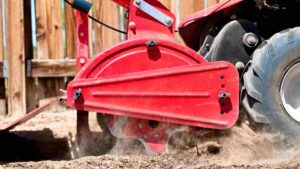 When it comes to gardening, a rototiller is an essential tool for preparing the soil. It’s a piece of equipment that can make the job a lot easier, especially for large gardens. If you’re in the market for a rototiller, there are several factors to consider before making your purchase. Here are 8 key factors to keep in mind when buying a rototiller.
When it comes to gardening, a rototiller is an essential tool for preparing the soil. It’s a piece of equipment that can make the job a lot easier, especially for large gardens. If you’re in the market for a rototiller, there are several factors to consider before making your purchase. Here are 8 key factors to keep in mind when buying a rototiller.
Size of the garden
The first thing to consider is the size of the garden. If you have a small garden, a mini-tiller or cultivator may be sufficient. However, for larger gardens, a standard-sized rototiller will be necessary. The size of the garden will also determine the width of the rototiller you need. A wider tiller will cover more ground quickly but may be too large for small gardens.
Type of soil
The type of soil you’re working with is another factor to consider. If the soil is hard and compacted, you’ll need a powerful rototiller with a strong engine. On the other hand, if the soil is loose and sandy, a less powerful tiller may suffice.
Engine power
The engine power is an important consideration when purchasing a rototiller. A more powerful engine will allow you to till through harder and more compact soil with ease. However, a more powerful engine will also consume more fuel, so you need to balance your power needs against your budget.
Tilling depth
The tilling depth is the maximum depth that the rototiller can till. For most gardens, a tilling depth of 6 to 8 inches is sufficient. However, if you’re preparing a new garden bed, you may need to till deeper to break up the soil and remove any rocks or debris.
Tilling width
The tilling width is the width of the area that the rototiller can till at once. A wider tiller will cover more ground quickly, but it may be too large for small gardens. A narrower tiller may take longer, but it can be more maneuverable in tight spaces.
Maneuverability
The maneuverability of the rototiller is an important consideration, especially if you have a lot of obstacles in your garden. A tiller with good maneuverability will be able to navigate around trees, shrubs, and other obstacles easily.
Weight
The weight of the rototiller is another consideration. A heavier tiller may be more difficult to maneuver, but it will provide better stability when tilling through tough soil. A lighter tiller may be more maneuverable, but it may not provide as much stability.
Price
The final consideration is the price of the rototiller. Rototillers can range from a few hundred dollars to over a thousand dollars. Determine your budget and look for the best rototiller within your price range.
Purchasing a rototiller requires careful consideration of several factors. Consider the size of your garden, the type of soil, engine power, tilling depth and width, maneuverability, weight, and price when making your selection. By doing so, you’ll be able to find a rototiller that will meet your needs and help you prepare your garden for planting.
